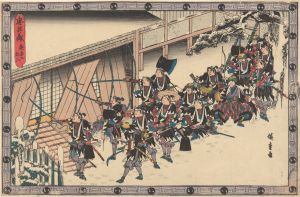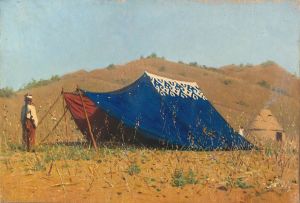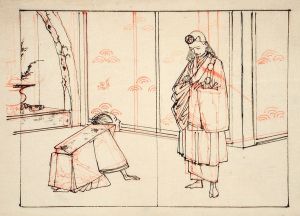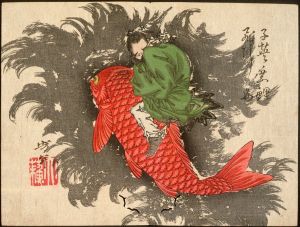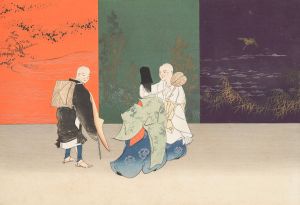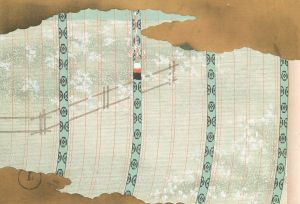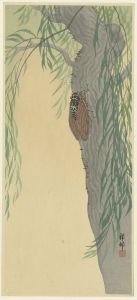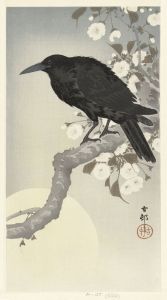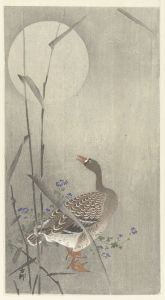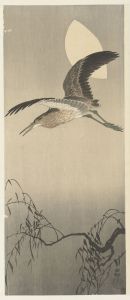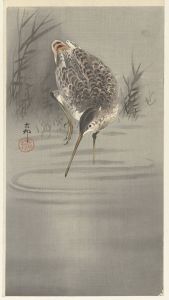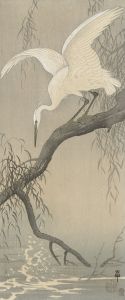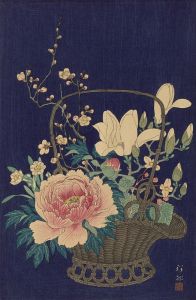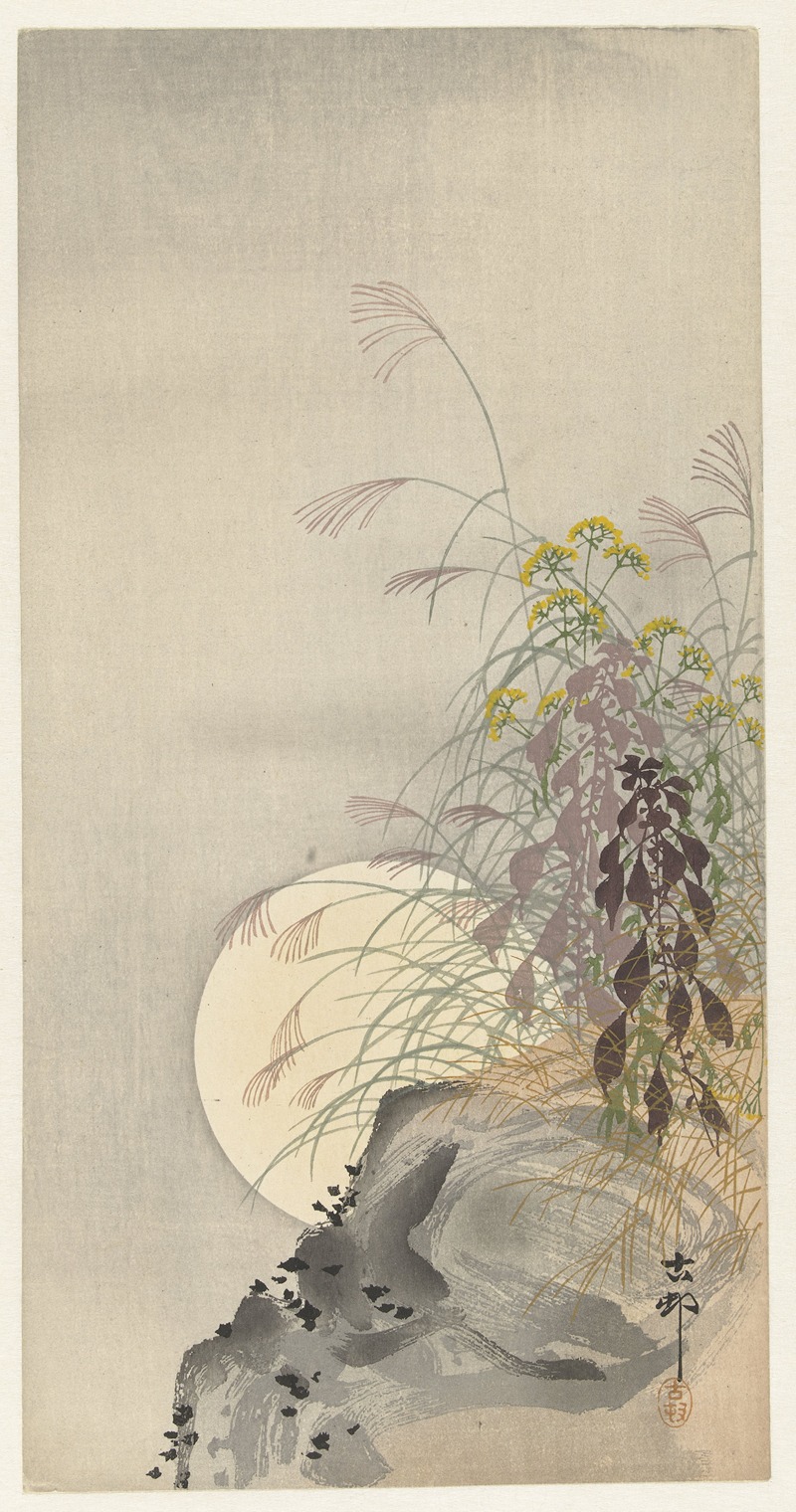
Grasses at full moon
A hand-painted replica of Ohara Koson’s masterpiece Grasses at full moon, meticulously crafted by professional artists to capture the true essence of the original. Each piece is created with museum-quality canvas and rare mineral pigments, carefully painted by experienced artists with delicate brushstrokes and rich, layered colors to perfectly recreate the texture of the original artwork. Unlike machine-printed reproductions, this hand-painted version brings the painting to life, infused with the artist’s emotions and skill in every stroke. Whether for personal collection or home decoration, it instantly elevates the artistic atmosphere of any space.
Ohara Koson (1877–1945) was a prominent Japanese artist known for his work in the shin-hanga ("new prints") movement, which revitalized traditional ukiyo-e woodblock printing during the late 19th and early 20th centuries. His art primarily focused on kachō-e, or "bird-and-flower" prints, a genre that depicted natural subjects with great attention to detail and aesthetic harmony. Among his notable works is the piece titled Grasses at Full Moon.
Grasses at Full Moon is a woodblock print that exemplifies Koson's mastery of composition, subtle color gradation, and atmospheric effects. The artwork portrays a serene nocturnal scene, featuring delicate grasses swaying under the soft glow of a full moon. The simplicity of the composition is balanced by the intricate detailing of the grasses and the nuanced shading of the moonlit sky, creating a tranquil and meditative mood. This piece reflects Koson's ability to capture the quiet beauty of nature, a hallmark of his artistic style.
Koson's prints often drew inspiration from traditional Japanese aesthetics, particularly the concept of mono no aware, which emphasizes the transient beauty of the natural world. In Grasses at Full Moon, this theme is evident in the ephemeral quality of the moonlight and the fragile forms of the grasses. The work also demonstrates Koson's skill in blending traditional Japanese techniques with modern influences, a characteristic feature of the shin-hanga movement.
The exact date of creation for Grasses at Full Moon is not definitively documented, but it is consistent with Koson's active period in the early 20th century, particularly during the 1910s and 1920s when he collaborated with publishers such as Watanabe Shōzaburō. Watanabe played a significant role in promoting shin-hanga artists to both Japanese and international audiences, and Koson's works were especially popular among Western collectors.
Koson's prints, including Grasses at Full Moon, were produced using traditional woodblock printing methods. This involved a collaborative process in which the artist designed the image, skilled carvers prepared the woodblocks, and printers applied pigments to create the final artwork. The result was a harmonious blend of craftsmanship and artistic vision.
Today, Grasses at Full Moon is celebrated as a quintessential example of Koson's ability to evoke the quiet elegance of nature. His works, including this piece, continue to be highly regarded by art historians and collectors, and they are frequently featured in exhibitions and collections of Japanese woodblock prints worldwide.





